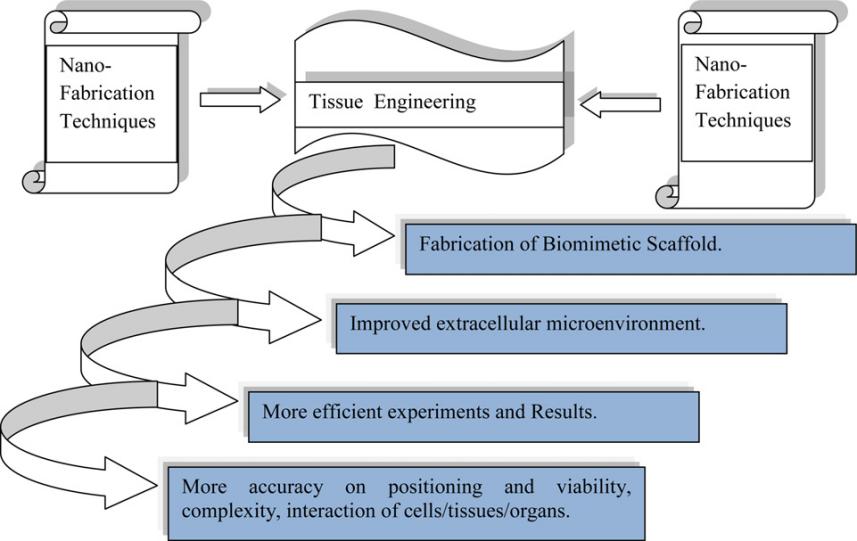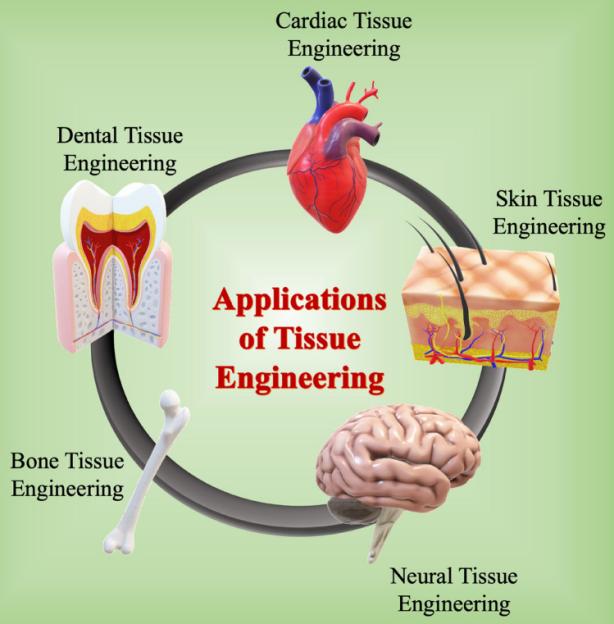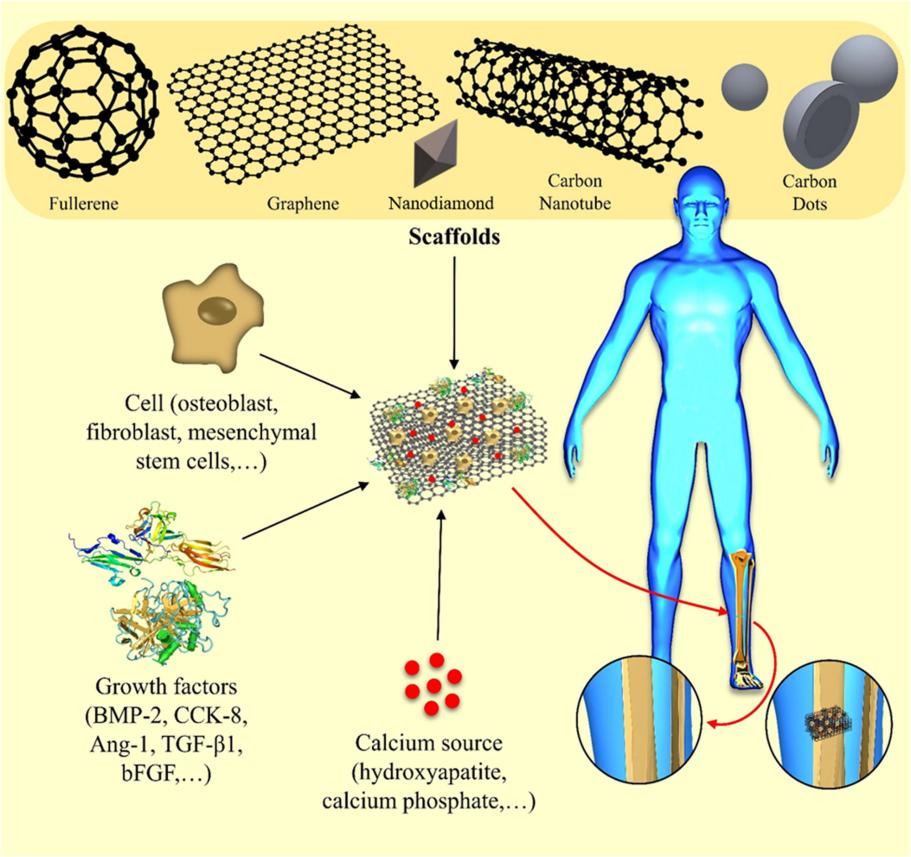Nanoformulation for Tissue Engineering Research
Inquiry
With the rapid development of nanotechnology, the design and manufacturing technology of nanoscale bionic microenvironments has been successfully applied to manufacture nanotopological surfaces and nanoscaffolds and to encapsulate and control the spatiotemporal release of drugs to guide cell behavior, thus promoting the rapid development of tissue engineering. CD Formulation is keen on developing nanoformulations that can serve as bio-alternatives to restore, replace, maintain, or enhance the function of tissue and organ with its advanced nanotechnology platform, thus promoting the development of tissue engineering.
Benefits of Nanoformulations in Tissue Engineering
Our R&D center attempts to make nanofibers, nanopatterns, and controlled-release nanoparticles using nanotechology for tissue engineering to mimic natural tissues. There are several significant advantages to using nanotechnology for tissue engineering research.
- We can develop the fabrication techniques of biomimetic scaffold based on special nanomaterials.
- We are able to improve the extracellular microenvironment through designing and modifying nanomaterials.
- More efficient experiments and results can be gained by tissue engineering research based on nanoformulations to improve the tissue.
- We can get more accuracy on positioning and viability, complexity, interaction of cell/tissues/organs through tissue engineering research utilizing nanotechnologies.
 Fig.1 Schematic representation of benefits of using nanofabrication for tissue engineering. (J. Danie Kingsley, et al. 2013)
Fig.1 Schematic representation of benefits of using nanofabrication for tissue engineering. (J. Danie Kingsley, et al. 2013)
Applications of Nanomaterials in Tissue Engineering
Nanomaterials, which are widely applied to repair and rebuild damaged tissues or organs, include polymeric nanoparticles (such as nanospheres, nanogels, polymeric vesicles, polymeric micelles, dendrimers, nanocapsules, etc.), nanocomposites (such as hydroxyapatite), carbon-based nanomaterials, silicon-based nanomaterials, metal-based nanoparticles (such as metal nanoparticles, metal oxide nanoparticles, magnetic nanoparticles) and protein nanomaterials. By means of copious experimental research, we can fabricate top-quality nanomaterials for repairing bones, skin, nerves, and teeth.
Applications of Nanomaterials in Dental Tissue Engineering
By designing rational nanomaterials to regulate the microenvironment of extracellular matrices and cell behavior, we can help customers accelerate nerve regeneration to repair nerve defects and treat neurological diseases. Our applications of nanomaterials in dental tissue engineering mainly include antibacterial agents for controlling oral infections, nanofillers for improving or repairing the mechanical properties and bioactivity of periodontal materials, new coatings for implants, toothpaste, and personal care products.
Applications of Nanomaterials in Neural Tissue Engineering
Polymeric scaffolds, hydrogels, nanoparticles, and nerve conduits are always applied as regulatory agents in neural tissue engineering. Our extensive experimental studies demonstrate that carbon-based nanomaterials possess significant potential for interacting with neurons and neural tissue.
Applications of Nanomaterials in Bone Tissue Engineering
By adding our advanced nanomaterials (ceramic nanomaterials, carbon-based materials, chitosan-based nanomaterials, metal-based nanoparticles, etc.) as fillers of scaffold materials, mechanical support is provided for damaged parts and suitable conditions for bone regeneration.
Applications of Nanomaterials in Skin Tissue Engineering
As a result of a large number of experimental studies, cellulose-based nanomaterials are widely applied for treating skin diseases and wound healing because of their absorption of wound exudate and easier removal of dressings. We also attempt to design and create nanocellulose-based films for the treatment of severe burns and promoting wound healing.
Applications of Nanomaterials in Cardiac Tissue Engineering
Nanomaterials for engineering of cardiomyocytes and tissues include gold nanoparticles, carbon nanotubes, graphene oxides, electroactive polymers, etc. Our nanomaterials are functionalized or inserted into several types of biomaterials, such as chitosan, silk fibroin, etc., to produce electrically conductive engineering scaffolds for cardiac tissue regeneration, to enhance cardiac stem cell viability and proliferation, enhance cell retention of cardiac muscle cells and adhesion, improve cardiac contractility, etc.
 Fig.2 Schematic representation of various applications of tissue engineering such as bone-, nerve-, cardiac-, and skin-associated tissues. (Ritika Sharma, et al. 2022)
Fig.2 Schematic representation of various applications of tissue engineering such as bone-, nerve-, cardiac-, and skin-associated tissues. (Ritika Sharma, et al. 2022)
Explore Our Nanotechnologies for Tissue Engineering Research
After years of exploration and research, CD Formulation has developed a variety of nanotechnologies for tissue engineering research and applications in different fields.
Stem Cell Tissue Engineering Through Nanotechnology
In stem cell tissue engineering, with abundant experimental studies, we have created electrospinning technology, soft lithography technology, and photolithography.
Neural Cell Tissue Engineering Through Nanotechnology
In neural cell tissue engineering, we attempt to explore electrospinning, replica molding, and microcontact printing technologies.
Cartilage Cell Tissue Engineering Through Nanotechnology
In cartilage cell tissue engineering, we have developed photolithography and replica molding techniques for maintaining cell behavior.
Bone Cell Tissue Engineering Through Nanotechnology
In bone cell tissue engineering, the techniques we have developed include soft lithography, photolithography, microcontact printing, and electrospinning for maintaining cell orientation and behavior.
Vascular Cell Tissue Engineering Through Nanotechnology
In vascular cell tissue engineering, the techniques we have developed include soft lithography, microfluidic patterning, microcontact printing, and electrospinning for maintaining cell orientation and behavior.
Hepatic Cell Tissue Engineering Through Nanotechnology
In hepatic cell tissue engineering, we have developed electrospinning, soft lithography, and photolithography technologies.
Custom Nanoformulation Service for Tissue Engineering Research
CD Formulation specializes in exploring and researching the development and customization of nanoformulations in tissue engineering, covering nanoparticles, metal nanoparticles, inoganic nanoparticles, nanofibers, etc. After our in-depth investigation and research, we can offer our professional service and support to the fabrication of these nanoformulations in tissue engineering.
Nanoparticle Development for Nanomedicine
CD Formulation is keen on the development of nanoparticles in tissue engineering, especially dental tissue engineering. We are able to create and customize personalized nanoparticles for tissue engineering (such as hydroxyapatite nanoparticles in dental tissue engineering).
Nanofiber Development for Nanomedicine
Nanofibers demonstrate wide application possibilities in regeneration of various tissues, such as nerves, bones, cardiac/skeletal muscles, and blood vessels. CD Formulation focuses on the development of nanofibers in tissue engineering, especially skin tissue engineering. And we can offer nanofiber customization services for tissue engineering.
In addition, we developed a deep insight into scaffold nanomaterials for bone tissue engineering, such as carbon-based nanomaterials (e.g., asgraphene oxide, carbon nanotubes, fullerenes, carbon dots, nanodiamonds, and their derivatives). Carbon-based nanomaterials have significant stimulating effect on cell growth, low cytotoxicity, efficient delivery of nutrients in the scaffold microenvironment, and appropriate functionalized chemical structures to promote intercellular communication and cell diffusion. We have also created a series of methods to customize carbon-based nanomaterials to meet the preparation of nanomaterials for bone tissue.
Why Choose CD Formulation?
- We can offer various specific nanoformulation development services for different tissue engineering.
- At our mature nanotechnology platforms, we have accumulated lots of experience in fabrication nanotechniques for tissue engineering, such as electrospinning technology, soft lithography, photolithography, etc.
- We also have rich experience in exploring and creating carbon-based nanomaterials such as graphene oxide, carbon nanotubes, fullerenes, carbon dots, nanodiamonds, and their derivatives for bone tissue engineering research.
Published Data
Technology: Fabrication technology of carbon-based nanomaterials for tissue engineering of bone
Journal: Journal of Advanced Research
IF: 11.4
Published: 2019
Results:
The authors expound the performance and applications of various carbon nanomaterials for bone tissue engineering scaffolds, including graphenes, carbon nanotubes, fullerenes, carbon dots, nanodiamonds, and their derivatives. At the same time, the authors discuss the key role of carbon nanomaterial-based scaffolds in bone tissue engineering research, as well as their significant stimulating effect on cell growth, low cytotoxicity, efficient nutrient delivery in the scaffold microenvironment, and appropriate functionalized chemical structures. To promote intercellular communication and improve cell spreading and other major advantages.
 Fig.3 Application of carbon-based nanomaterials as scaffolds in bone tissue engineering. (Reza Eivazzadeh-Keihan, et al. 2019)
Fig.3 Application of carbon-based nanomaterials as scaffolds in bone tissue engineering. (Reza Eivazzadeh-Keihan, et al. 2019)
The development of nanotechnology has provided more and more opportunities for the rise of nanomaterial scaffolds used in tissue engineering. CD Formulation, as your faithful partner in nanoformulation development services, can offer customization services for various nanoformulations in tissue engineering research, based on nanoparticles, metal and inorganic nanoparticles, nanofibers, etc. If you are interested in nanoformulations for tissue engineering research, please contact us for in-depth discussion.
References
- J. Danie Kingsley, Shivendu Ranjan, Nandita Dasgupta, et al. Nanotechnology for tissue engineering: Need, techniques and applications. Journal of Pharmacy Research. 2013,6(2):200-204.
- Ritika Sharma, Sanjeev Kumar, Bhawna, et al. An Insight of Nanomaterials in Tissue Engineering from Fabrication to Applications. Tissue Eng Regen Med. 2022,19(5): 927-960.
- Reza Eivazzadeh-Keihan, Ali Maleki, Miguel de la Guardia, et al. Carbon based nanomaterials for tissue engineering of bone: Building new bone on small black scaffolds: A review. Journal of Advanced Research. 2019,18,185-201.
How It Works
STEP 2
We'll email you to provide your quote and confirm order details if applicable.
STEP 3
Execute the project with real-time communication, and deliver the final report promptly.
Related Services


 Fig.1 Schematic representation of benefits of using nanofabrication for tissue engineering. (J. Danie Kingsley, et al. 2013)
Fig.1 Schematic representation of benefits of using nanofabrication for tissue engineering. (J. Danie Kingsley, et al. 2013)  Fig.2 Schematic representation of various applications of tissue engineering such as bone-, nerve-, cardiac-, and skin-associated tissues. (Ritika Sharma, et al. 2022)
Fig.2 Schematic representation of various applications of tissue engineering such as bone-, nerve-, cardiac-, and skin-associated tissues. (Ritika Sharma, et al. 2022)  Fig.3 Application of carbon-based nanomaterials as scaffolds in bone tissue engineering. (Reza Eivazzadeh-Keihan, et al. 2019)
Fig.3 Application of carbon-based nanomaterials as scaffolds in bone tissue engineering. (Reza Eivazzadeh-Keihan, et al. 2019)
